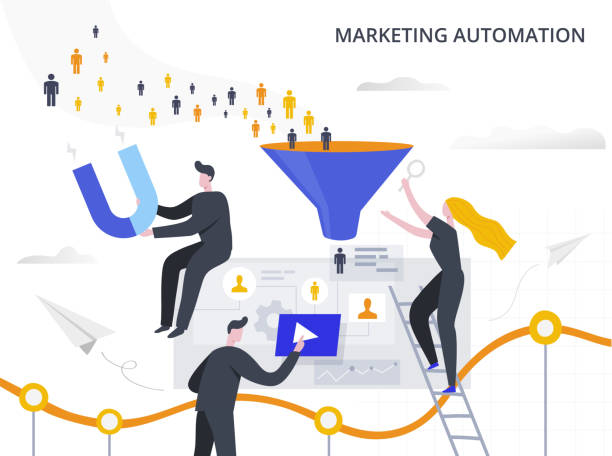In a fast-paced digital world where customer expectations are higher than ever, businesses must find smarter ways to keep their customers engaged and loyal. Traditional loyalty programs, while effective to an extent, can become cumbersome and inefficient without the right tools in place. This is where loyalty automation emerges as a game-changer, enabling companies to streamline their loyalty strategies while delivering a more personalized and consistent customer experience.
Loyalty automation refers to the use of technology to manage and execute loyalty initiatives without constant manual intervention. From sending personalized offers to tracking customer engagement, loyalty automation allows businesses to focus more on strategy and innovation rather than daily operational tasks.
Why Loyalty Automation Matters
Customer loyalty is a vital driver of long-term business success. Loyal customers spend more, refer others, and are more forgiving during service hiccups. However, managing loyalty efforts manually can lead to inefficiencies, delays, and inconsistent messaging. Automating these processes ensures timely, accurate, and relevant interactions, making customers feel valued at every touchpoint.
Loyalty automation also empowers brands to scale their programs effortlessly, adapting to increasing customer data, evolving preferences, and dynamic market conditions.
Key Benefits of Loyalty Automation
1. Consistency Across Channels
One of the biggest challenges in customer retention is maintaining consistency across platforms—whether it’s email, social media, mobile apps, or in-store experiences. Loyalty automation ensures that customers receive consistent communication, rewards, and experiences no matter how or where they engage with the brand.
Automated workflows can trigger rewards or messages based on customer behavior, making interactions more timely and relevant.
2. Personalization at Scale
Using loyalty automation, businesses can personalize interactions for thousands or even millions of customers. With data from purchase history, browsing behavior, and engagement patterns, companies can tailor offers, product recommendations, and rewards to each customer’s unique preferences.
This kind of personalization boosts satisfaction and drives higher engagement, all without requiring manual segmentation or analysis.
3. Efficient Campaign Management
Running loyalty campaigns manually can be resource-intensive. Loyalty automation simplifies the process by allowing marketers to schedule campaigns, set up recurring rewards, and monitor performance in real-time. Automated tools also allow for A/B testing, optimization, and segmentation, making it easier to adjust campaigns based on performance metrics.
4. Real-Time Customer Insights
Automated loyalty platforms collect and analyze customer data in real time. This helps businesses identify trends, spot potential churn risks, and refine their offerings. Insights such as average time between purchases, redemption rates, or engagement frequency can help shape smarter loyalty strategies.
With loyalty automation, businesses can respond quickly to shifts in customer behavior or preferences.
5. Reduced Operational Costs
By reducing the need for manual intervention, loyalty automation lowers operational costs and reduces human error. Tasks like sending birthday rewards, tracking points, issuing notifications, and managing redemptions can all be handled automatically, freeing up internal resources for more strategic initiatives.
Core Features of Loyalty Automation Tools
A good loyalty automation platform typically includes the following capabilities:
- Automated reward distribution based on predefined triggers such as purchases, anniversaries, or referrals.
- Behavior-based customer journeys that adapt in real time depending on customer actions.
- Multi-channel communication tools to ensure messages reach customers through email, SMS, push notifications, or social media.
- Dashboard and analytics for real-time tracking of loyalty KPIs such as participation rates, redemption levels, and customer lifetime value.
- Integration with CRM, POS, and eCommerce systems to centralize data and unify the customer experience.
Use Cases of Loyalty Automation
- Welcome Series: Automatically enroll new customers into a loyalty program and guide them through the benefits.
- Abandoned Cart Recovery: Send reward-based incentives to bring customers back and complete their purchases.
- Re-engagement Campaigns: Target inactive customers with personalized offers to win them back.
- Milestone Rewards: Celebrate birthdays, anniversaries, or spending milestones with automated perks.
- Tier Advancement Notifications: Automatically inform customers when they move up in a loyalty tier, along with new benefits.
Best Practices for Implementing Loyalty Automation
- Define clear goals: Know what you want to achieve—higher retention, increased purchase frequency, or better customer engagement.
- Map the customer journey: Identify key touchpoints where automated interactions can add value.
- Test and optimize: Continuously monitor your automated workflows and make improvements based on performance data.
- Stay customer-focused: Use automation to enhance, not replace, the human element. Ensure communications remain friendly, helpful, and on-brand.
- Ensure data privacy: Always use customer data responsibly and comply with privacy regulations.
Conclusion
Loyalty automation is no longer a luxury; it’s a necessity for modern businesses looking to retain customers and drive growth. It provides a scalable and efficient way to create personalized, engaging loyalty experiences that keep customers coming back. With the right strategy and tools, businesses can turn loyalty into a strategic advantage—reducing churn, increasing customer lifetime value, and ultimately building stronger relationships.
By embracing loyalty automation, companies not only streamline their internal processes but also deliver seamless, delightful experiences that today’s customers expect.



